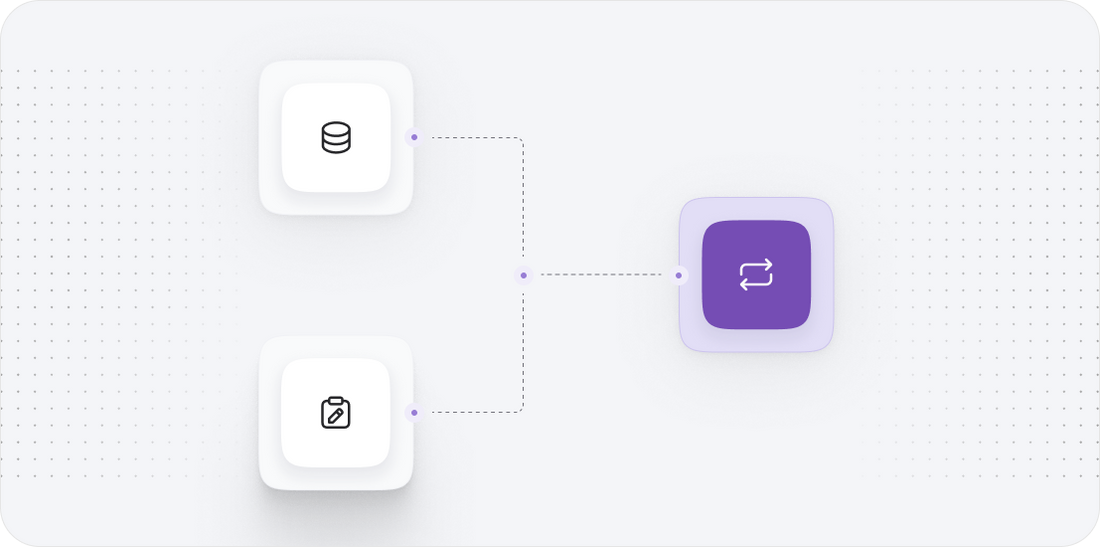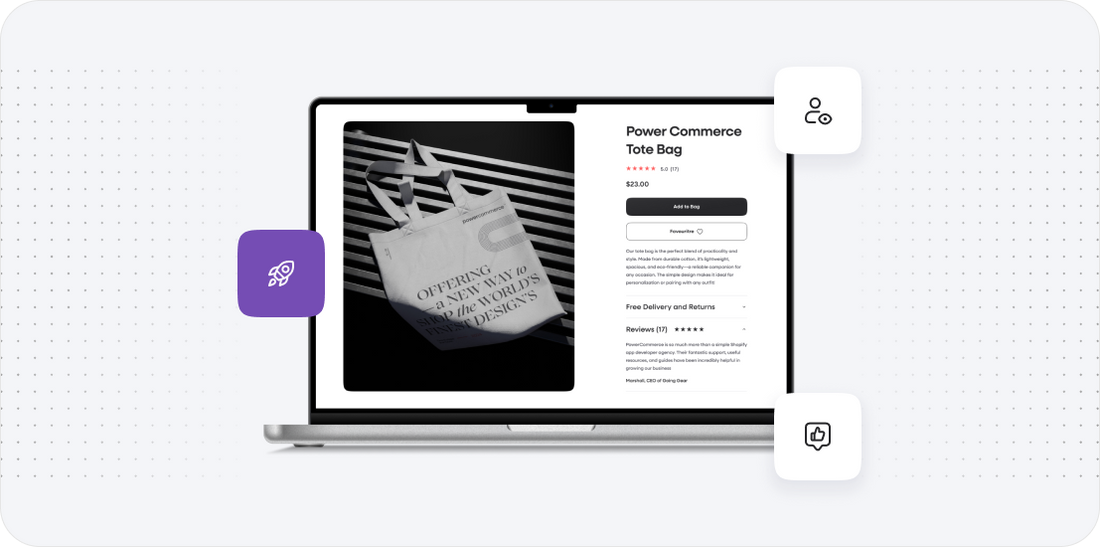





Shopware to Shopify
Migrating your store from Shopware to Shopify might seem daunting, but with proper planning and the right tools, it's a smooth process. Follow this step-by-step guide to ensure a successful transition.
Schedule a call
Step-by-Step Migration Guide: Shopware to Shopify migration guide
Step 1: Backup Your Shopware Data
Backing up your Shopware data is the first critical step in the migration process to Shopify. It ensures that all your products, customer data, and orders are securely saved before making any changes.
Step 2: Prepare Your Shopify Store
Setting up your new Shopify store is essential before migrating data. This step involves configuring the initial settings and choosing the right plan.
Step 3: Export Data from Shopware
Exporting data from Shopware is a critical step in the migration process. This ensures that all relevant information is prepared for transfer to Shopify.
Step 4: Import Data to Shopify
Importing your Shopware data into Shopify is a crucial phase that requires careful execution to ensure data integrity and accuracy.
Step 5: Configure Payment and Shipping Settings
Configuring payment and shipping settings in Shopify is essential to ensure a smooth checkout process for your customers after migration.
Step 6: Test Your Shopify Store
Testing your Shopify store before going live is crucial to ensure all functionalities work as expected and provide a positive customer experience.
Step 7: Optimize Your Store for SEO and Marketing
Optimizing your Shopify store for SEO and marketing is critical to drive traffic and improve visibility after migration.
Power Your Step - Get in Touch
Contact PowerCommerce to leverage our expertise and ensure a seamless migration experience from Shopware to Shopify.
Step 1: Backup Your Shopware Data
Before initiating the migration from Shopware to Shopify, it is imperative to back up all your data. This step protects your business from potential data loss during the transition. A comprehensive backup includes all essential data types such as products, customer information, orders, and store configurations.
To perform a backup, follow these steps:
- Access the Shopware Administration Panel: Log into your Shopware admin panel to begin the backup process.
- Navigate to the Backup Section: In the main menu, locate the 'Settings' section, and select 'Backup & Restore.'
- Choose Backup Options: Select the types of data you wish to back up. It is recommended to include:
- Product catalogs
- Customer accounts and details
- Order histories
- Store settings and configurations
- Initiate the Backup: Click the 'Create Backup' button. The system will generate a backup file that you can download for safekeeping.
Technical Considerations: Ensure that the backup file is stored securely and is accessible for restoration if needed. Regular backups are a best practice in eCommerce, particularly before major changes.
Best Practices: Use cloud storage or external drives to keep your backup files secure. Schedule periodic backups to avoid data loss in the future.

Step 2: Prepare Your Shopify Store
Having a well-prepared Shopify store is crucial for a successful migration from Shopware. You need to set up your Shopify account, select a suitable plan, and configure initial settings to match your business needs.
- Sign Up for Shopify: Visit the Shopify website and create an account. Choose a plan that fits your business's size and requirements.
- Configure Basic Settings: After signing up, navigate to the 'Settings' section in the Shopify admin panel. Here, you can:
- Set your store name and address
- Customize your store's currency
- Configure tax and shipping settings
- Select a Theme: Choose an appropriate theme for your store that reflects your brand identity. Shopify offers a wide range of free and paid themes that are customizable.
- Install Essential Apps: Consider installing apps from the Shopify App Store that enhance functionality, such as SEO tools, email marketing integrations, and analytics.
Technical Considerations: Ensure that your Shopify store settings align with your business model, whether it’s B2C or B2B, and that all necessary payment gateways are configured correctly.
Best Practices: Take advantage of Shopify's trial period to familiarize yourself with the platform and explore its features before the full migration.

Step 3: Export Data from Shopware
Exporting data from Shopware involves creating CSV files containing your products, customers, and orders. This data will later be imported into your new Shopify store.
- Product Data Export: Access the 'Products' section in your Shopware admin panel. Select all products you wish to migrate, and use the export function to create a CSV file. Ensure the CSV includes fields such as:
- Product Name
- SKU
- Price
- Stock Status
- Customer Data Export: Navigate to the 'Customers' section and perform a similar export. Ensure you include:
- Name
- Email Address
- Shipping Address
- Order Data Export: Export your order history by navigating to the 'Orders' section. This should include:
- Order Number
- Products Ordered
- Customer Information
Technical Considerations: Double-check the CSV files to ensure that all required fields are present and correctly formatted for Shopify's import requirements.
Best Practices: Maintain data integrity by performing quality checks on your exported files. Ensure no duplicates or errors exist before proceeding to the next step.

Step 4: Import Data to Shopify
Once you have successfully exported your data from Shopware, the next step is to import this data into your Shopify store. Shopify allows you to import products, customers, and orders through its robust import functionality.
- Access the Shopify Admin Panel: Log into your Shopify account and navigate to the 'Products' section.
- Import Products: Click on 'Import' and select the CSV file you exported from Shopware. Shopify will guide you through the import process, mapping fields as necessary.
- Import Customers: Repeat the import process for customers by going to the 'Customers' section, clicking 'Import', and selecting the corresponding CSV file.
- Import Orders: Finally, import your orders by navigating to the 'Orders' section. Ensure that the order CSV file includes all relevant order details for accurate migration.
Technical Considerations: Verify that all imports are successful and that no data is missing. Shopify has specific requirements for CSV formatting, so ensure compliance to avoid errors.
Best Practices: After importing, conduct a thorough review of your data within Shopify to ensure everything has migrated correctly. Check product listings, customer records, and order histories.

Step 5: Configure Payment and Shipping Settings
After importing your data into Shopify, the next step is to set up your payment and shipping options. These configurations are crucial for ensuring that customers can complete their purchases without issues.
- Set Up Payment Gateways: In the Shopify admin panel, navigate to 'Settings' > 'Payments'. Here, you can select from various payment gateways such as:
- Shopify Payments
- PayPal
- Stripe
- Configure Shipping Options: Go to 'Settings' > 'Shipping and Delivery'. You can set shipping rates, methods, and conditions based on your business model. Consider the following:
- Flat rate shipping
- Free shipping thresholds
- International shipping settings
Technical Considerations: Ensure that payment gateways are fully functional and that shipping rates reflect your business policies. Test these settings to verify that transactions can be completed smoothly.
Best Practices: Enable multiple payment options to cater to customer preferences. Regularly review shipping settings to optimize costs and delivery times.

Step 6: Test Your Shopify Store
Once you have set up your Shopify store with imported data and configured payment and shipping settings, it is essential to conduct thorough testing. This step helps to identify and rectify any issues before your store is live.
- Check Product Listings: Review your product pages to ensure that all information is accurate, including descriptions, images, prices, and stock levels.
- Test the Checkout Process: Perform a few test transactions using different payment methods. Ensure that customers can complete purchases without issues.
- Verify Shipping Rates: Test various shipping options during checkout to confirm that rates are applied correctly based on customer locations.
- Review Customer Accounts: If applicable, test customer account creation and login processes to ensure a smooth user experience.
Technical Considerations: Monitor for any error messages or glitches during testing. Utilize Shopify’s support resources if you encounter issues that you cannot resolve.
Best Practices: Encourage a few trusted individuals to test the store and provide feedback. This can help uncover issues that you might have missed.

Step 7: Optimize Your Store for SEO and Marketing
After testing your Shopify store, the final preparatory step before launching is to optimize it for search engines and marketing efforts. Proper optimization ensures that your store can attract visitors organically and through paid advertising.
- SEO Optimization: Edit page titles, meta descriptions, and URLs for your product and collection pages to include relevant keywords. Consider using Shopify's SEO apps to streamline this process.
- Set Up Redirects: If your URL structure has changed, create 301 redirects from your old Shopware URLs to new Shopify URLs to preserve SEO rankings and direct traffic appropriately.
- Implement Google Analytics: Link your Shopify store to Google Analytics to monitor performance, track visitor behavior, and make data-driven decisions.
- Marketing Tools Integration: Install marketing tools like email marketing apps to engage customers post-launch and drive repeat purchases.
Technical Considerations: Ensure that all SEO settings are properly configured and that Google Analytics is tracking correctly. Regularly review your store’s performance metrics.
Best Practices: Continuously monitor SEO performance and adjust strategies as necessary. Regularly update your content and product listings to improve visibility.

Power Your Step - Get in Touch
Ready to take the next step in your eCommerce journey? At PowerCommerce, we specialize in seamless migrations from Shopware to Shopify, ensuring that your store transitions smoothly without losing valuable data or functionality.
Our team of experts is dedicated to providing you with the best support throughout the migration process. We understand the importance of minimizing downtime and maximizing your store's performance. Contact us today for a risk-free consultation and let us help you power your eCommerce success!
- Visit our contact page: PowerCommerce Contact Form
- Call us at: 800-099-9090
- Email us directly: info@powercommerce.com
Don’t wait--get in touch with us now to learn how we can assist you with your Shopware to Shopify migration!
Stay aligned on what's happening in the commerce world
Trusted by 1000+ innovative companies worldwide
Schedule Your Migration Today
For businesses prioritizing simplicity, scalability, and robust support, Shopify is the clear winner.
Looking to migrate without hassle? Power Commerce can handle the entire process, ensuring smooth data transfer, store setup, and post-launch success.
Marka Marulića 2, Sarajevo, 71000 BiH
00387 60 345 5801
info@powercommerce.com


